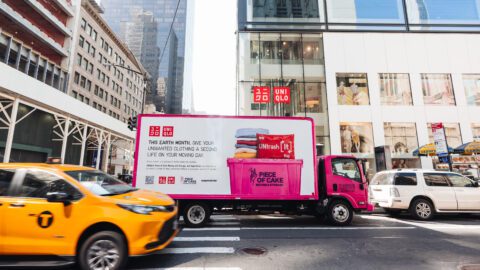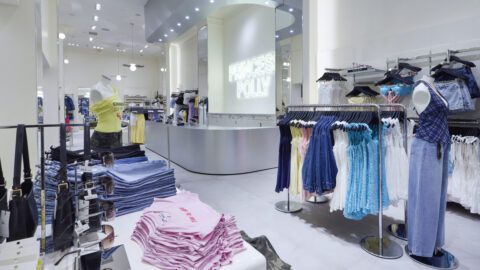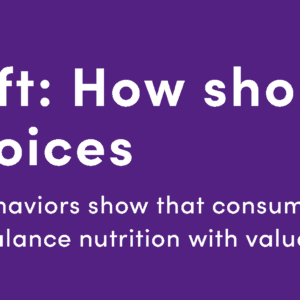In 2024 there were 5,462 gun-related incidents in the U.S., and retail represented the single biggest vertical where these incidents took place (1,459), followed by K-12 schools (1,417). These are scary statistics that will likely (sadly) surprise no one.
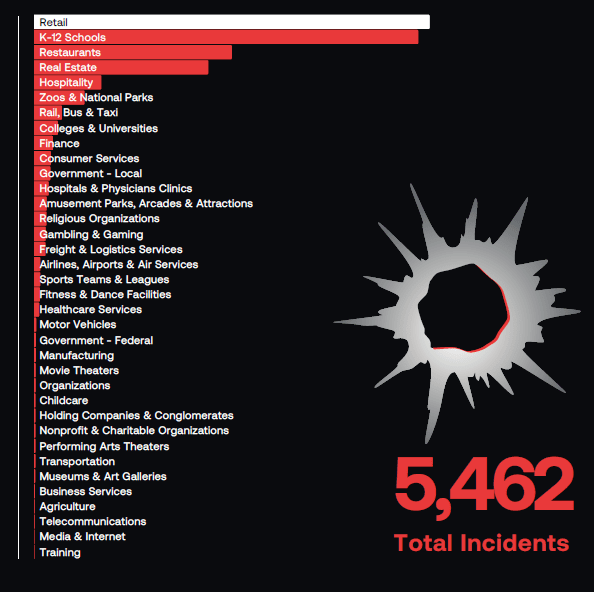
However, a closer look at the data reveals a picture of gun violence in America, and at retail, that may in fact be surprising. While national news coverage tends to highlight the most horrific events, the reality of most gun violence incidents is much different. Active shooter events, where someone enters a space with the intent to kill, are relatively rare. The most common gun-related incident is a personal dispute that escalates, followed by a weapon being discovered but not used and shooting threats.
Despite the slightly less nefarious nature of these kinds of incidents, gun violence still accounted for 1,642 fatalities and 3,295 injuries in 2024; 551 of those fatalities happened at retail. This data comes from the ZeroEyes Gun Violence Research Center and is outlined in its 2024 ZeroEyes Gun Violence Report. ZeroEyes creates a human-verified AI gun detection software solution that integrates into existing digital security cameras to mitigate gun-related violence.
“The way that we started with all of this was we were looking for more information about a shooting that happened at a Kroger grocery store,” said Erin Acheson, VP of Business Intelligence at ZeroEyes in an interview with Retail TouchPoints. “I was sitting with a colleague, and we were Googling ‘shooting at a Kroger,’ thinking that was specific enough — 75 results came up. We started scrolling through and that led us down the rabbit hole of shootings at grocery stores [in general]. It was pretty intense in terms of the volume of incidents that are happening at grocery stores. As we started really looking at that and tabulating all retail events alongside other verticals, we found very quickly that retail has a lot of them.”
Advertisement
The ZeroEyes analysis doesn’t cover any and all gun violence in America; for example, domestic incidents — that is, events that happen inside a residence — aren’t included in the report. Yet it still paints a dire picture of the situation in America today, one that is of utmost concern to consumers and the merchants who serve them.
Much attention has been given to retail crime recently, focused primarily on shoplifting and theft, perhaps because that kind of crime is easier to thwart than an unpredictable, angry person with a gun. But there are things retailers can do to protect themselves and their customers from gun-related incidents, so Retail TouchPoints went down the rabbit hole with Acheson to explore the nuances of gun violence at retail and how it can be prevented.
First, Let’s Dispel Some Myths (and Hopefully Provide a Little Reassurance)
In August 2023, at Brandon Mall in a suburb of Tampa, Fla., a woman reached into her purse to pay for her Charley’s Cheesesteak order and accidently discharged her gun. No one was injured by the gunshot but it caused mass panic, with customers across the mall fleeing to exits during a busy back-to-school shopping weekend. Alarms went off, law enforcement responded, and the mall was shut down for the day. No one was seriously injured, but the total cost to the operators and merchants was estimated to be around $53 million.
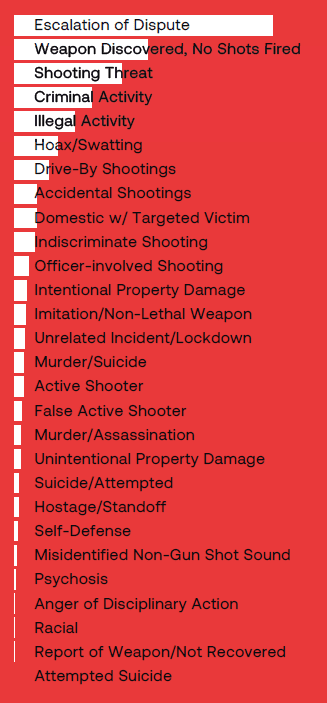
This is actually a pretty common example of the shape gun violence takes at retail and in general, where false alarms, accidents and personal incidents far outnumber malicious mass shootings. “It’s so rare that somebody shows up with an AK-47 and is like, ‘I am going to kill everyone in here,’” said Acheson. “Most of the time what happens is spontaneous gun violence, and it’s the escalation of a dispute. Something like, ‘You stole my parking spot’ or ‘You got the last box of Girl Scout cookies,’ that kind of crazy. Someone pulls out a gun and shoots someone else because they got in a fight, and then the whole situation is done and over. But when people hear shots, they yell ‘active shooter,’ they start to scream and run, panic ensues and places are closed down.”
Acheson herself experienced a gun-related incident prior to her time at ZeroEyes, and it also followed a similar trajectory of a personal altercation that escalated out of control. “For the most part, you have to take heart in knowing that the vast majority of these things are the escalation of a dispute, and that if you remove yourself and create a good perimeter between yourself and whatever’s happening, chances are it’s going to be over very quickly,” reassured Acheson.
Small solace in the midst of such troubling circumstances, but solace nonetheless.
Why is Retail Such a Lightning Rod for Gun Violence?
As for why so many of these incidents happen at retail, it’s simply because “retail encompasses such a large like sector of where people go when they’re not at home,” explained Acheson.
Adding to the complexity of assessing the problem and finding solutions is that retailers tend to keep their data about such incidents very quiet. “What that means is, unless it’s national news, for the most part you wouldn’t know that Target has had ‘X’ number of shootings this year or Walmart has had ‘Y’ number of shootings,” said Acheson. “And because you wouldn’t know that, you don’t know that this is a trend that we should be on top of.”
Getting a more holistic view of the situation was a goal of ZeroEyes’ research, and in the process the company uncovered a number of other relevant trends in gun violence that can point to potential mitigation strategies.
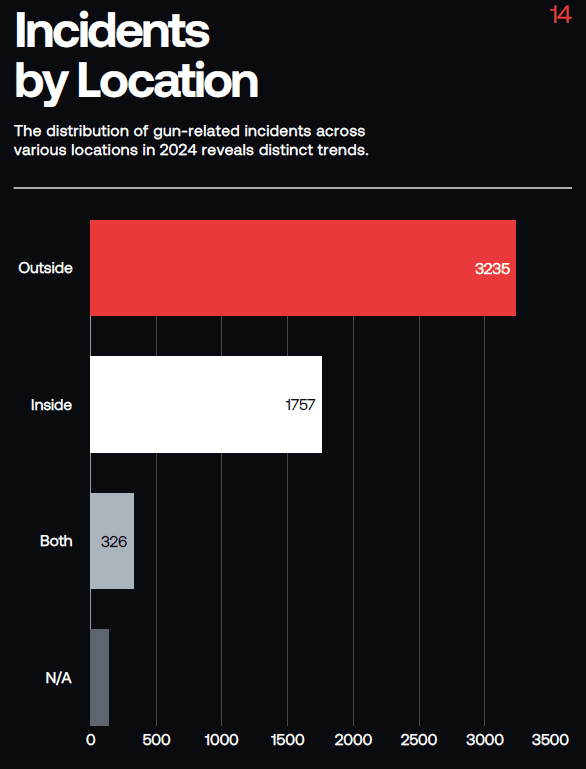
For example, the majority of all gun violence incidents (60%, or 3,235 in 2024) originate outdoors, and parking lots in particular seem to be a flash point, with 1,848 incidents occurring in parking lots in 2024. “Even if they end up moving indoors, the person often initially brandishes their firearm and even may take a few shots outside before entering a space, which for retailers is a huge opportunity to be able to protect their outdoor spaces for not just their patrons and staff, but also for things like property damage,” said Acheson.
The Cost of Gun Violence
The worst cost of gun violence is death and injury. Beyond that there are real costs to businesses that happen to be the location of these incidents, even if they don’t result in fatalities or injuries. In the case of the Brandon Mall, for example, since the mall had to be closed for the day, much of the food in the food court was thrown out.
These secondary costs can cover a wide range, said Acheson, such as:
- Lost sales and other costs due to unexpected closures;
- Damage to merchandise or property, most often caused by panicked crowds;
- Insurance premiums that can rise after an incident;
- The risk of lawsuits from customers and employees; and
- Depending on where the merchant is located, there could also be costs for the services of law enforcement and first responders.
“All of these things start to stack up and, in the case of [the Brandon Mall] it ends up being about $53 million for this woman who reaches into her purse to pay for a cheesesteak and discharges her concealed carry weapon,” summarized Acheson.
There are also potential future costs, as a new consumer survey from Flock Safey and Zencity revealed, which found that 63% of shoppers who have seen retail crime (which in this case could also include things like shoplifting or a robbery) said they are more likely to shop online after the incident.
What Retailers Can do About Gun Violence
“You can’t fix stupid or crazy, unfortunately, and because of that retailers tend to focus a lot on loss prevention and shrink and things like that, but there are things retailers can do to be more preventative [in cases of gun violence],” said Acheson.
First and foremost is increasing visibility, particularly in outdoor settings near your business, which tend to be overlooked when it comes to security. “In a lot of cases a retailer may not own the parking lot or the area outside, but they could have a camera that faces out in that direction installed on the exterior of their building,” Acheson advised. “And if retailers are in a strip mall-type situation or there’s a property management group, they should band together and impress upon the group that [the parking lot] is, in fact, the most likely place where something is going to happen — and that if gun incidents do happen, whether malicious or not, it makes it harder to renew leases for these property managers [so they have a vested interest in prevention].”
Retailers should also look for solutions “that amplify what they’ve already got going on security-wise,” Acheson added. That could include reconsidering the placement of in-store cameras, adding gun detection software that can be plugged into the existing security infrastructure and even providing additional specialized training for security personnel.
“My two cents as a human and a person who researches this all the time, and as a person who was in an active gun violence incident myself in a public place, is that if you know what the most likely scenarios are you can work to de-escalate them,” said Acheson. “It doesn’t actually need to come to shots fired.
“There is of course an inherent danger to involving yourself in the escalation of a dispute; you don’t want to become the victim, but if you see the situation starting, you can [try to calm it down or move it outside],” Acheson added. “Or you see a fight starting to break out, and nobody has pulled a gun yet, but you still call authorities. If you’re in an authoritative position in the store, or if you’re the kind of person who is physically imposing enough to be like, ‘Hey, can you all possibly take it outside?’ I think you should do that, as long as it hasn’t escalated to the point where your intervention puts you in harm’s way.”
As Acheson noted, though, beyond the potential safety risk, some associates may risk their jobs by trying to intervene. Many retailers have non-engagement policies to protect their employees, a fact that made headlines in 2023 when two Lululemon employees intervened to stop a theft at the store where they worked in Georgia. Despite pushback, Lululemon stuck by its decision to fire the associates, who it said “knowingly broke the policy,” which is intended to keep employees and customers safe.
Regardless of how people choose to respond, knowledge is power, said Acheson: “If you can spot the signs of what’s happening you can distance yourself from it, and also take [comfort in the] knowledge that it’s probably not somebody who’s there to kill you.”






